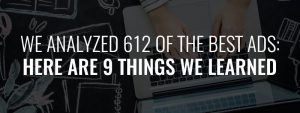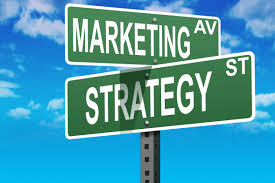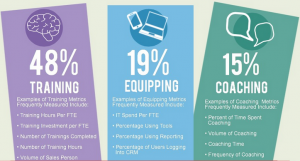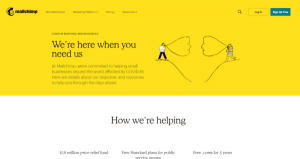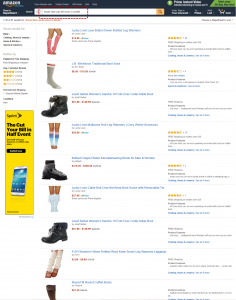As 2015 draws to a close and 2016 draws near, it sure feels like we are entering into a veritable golden age of digital marketing, at least for larger businesses. Article after article regales us with tales of the rise of corporate programmic ad buying, or how enterprise-level companies are using content marketing and rich media to produce a wellspring of highly sophisticated, interactive, branded content; how brands themselves are fast becoming publishers, narrowcasting a dizzying array of digital marketing campaigns micro-targeted to specific audience segments, or how the world’s leading retailers are going SoLoMo in a hurry, utilizing sophisticated proximity-based marketing technologies like geofences and iBeacons to lure nearby, mobile-toting consumers with personalized, real-time offers and promotions.
Yes, a virtual panoply of amazingly intricate and beautifully complex multi-million dollar integrated digital marketing strategies that, unfortunately, the overwhelming majority of businesses don’t have the wherewithal or resources (human and budgetary) to implement. Let me explain.
Small Business Rules
According to U.S. Census Bureau data, 99.7% of US businesses are classified as small businesses (fewer than 500 employees). Moreover, the vast majority of these are what you might classify as “truly small” businesses: fully nine in ten (89.8%) are comprised of fewer than 20 employees.
Interestingly, according to the IDC, the average annual revenue of a small business with a website is $ 5.03 million. The US Small Business Administration (SPA) notes how, as a general rule, small businesses with revenues less than $ 5 million should allocate 7-8% of their revenues to marketing. This means your average $ 5 million small business should be spending in the neighborhood of $ 350-400,000/year on marketing.
Wouldn’t that be nice. In reality, most “truly small” businesses spend much, much less than this on marketing—a 2014 BrightLocal survey of businesses with 1-50 employees found that fully 83% were spending less than $ 1,000 per month on marketing—and I’m willing to bet that the portion of this budget allocated to digital initiatives, though doubtless varying widely, seldom, if ever, reaches 100%.
In fact, if we’re to believe these statistics, nearly everyone reading this article either owns or is working for a small business that is allocating a portion of its relatively modest marketing budget on a positively dizzying array of potential 2016 digital marketing initiatives. Awesome!
Feeling overwhelmed? Believe me, you’re not alone…
Fear not, for behold, I bring you tidings of great joy this holiday season: five proven digital marketing strategies and tactics for small businesses just like yours to focus on in 2016 that can be translated into actionable, high-return marketing initiatives at a reasonable cost.
Inbound Marketing
As I noted in a recent blog, businesses need to operate transparently and communicate openly in today’s consumer-driven era. Inbound marketing empowers companies to do just that, realigning the brand’s internal-facing focus on sales, marketing, and product toward an external-facing focus on strategic decision-making based on the wants and needs of the customer. With inbound marketing, the emphasis is on earning, not buying, a person’s attention, which is accomplished by actively engaging on social media and producing fresh and original content such as blogs, ebooks, videos, webinars, and podcasts. This inbound combination of relevant content and online engagement creates a solid foundation for sales and marketing efficiency, effectiveness, and growth.
The effectiveness of inbound as a preferred marketing strategy is underscored in the findings of HubSpot’s “State of Inbound 2015” report, a global survey of nearly 4,000 marketing professionals. Among marketers surveyed, inbound had a 75% likelihood of being the marketing approach of choice, while outbound had only a 25% chance. This 3:1 ratio remained consistent across all company types (B2B, B2C, and nonprofit).
Moreover, every company HubSpot surveyed, regardless of marketing budget, was 3X as likely to see a higher ROI on inbound marketing campaigns than on outbound. This is partly because inbound leverages the most prevalent consumer-driven modalities of the digital age, and partly because inbound campaigns are more cost-efficient than many traditional outbound strategies (PR, print, radio, TV advertising, etc.).
Marketing Automation
If you’re seriously considering a move to inbound, it’s much easier to manage inbound marketing campaigns with some type of all-in-one marketing automation software, which has built-in web, social, customer relationship management (CRM), and content management software (CMS) functions. Popular marketing automation software options include HubSpot (which we use), Marketo, Eloqua, and Lyris, although there are numerous players in the space.
For my money, of all the benefits of marketing automation software, perhaps the most significant is the ability to access in-depth marketing analytics through a single unified platform. You can use the kind granular data feedback the software provides to build high-conversion retargeting campaigns (see below), or more generally, to refine future digital marketing initiatives.
For small businesses, marketing automation software is still in the early stages of adoption: Software Advice’s 2015 Marketing Automation Software Small Business BuyerView report notes how nearly all buyers (98%) are looking for dedicated marketing automation software for the first time, and nearly half (47%) are still using manual methods.
For more detailed advice on getting started with marketing automation software, check out this blog here.
Retargeting (aka Ad Retargeting; Remarketing)
Marketers often talk about top-of-mind awareness, or the practice of staying in front of a prospect as they go about their daily routine. Retargeting does just that, tracking prospects who visit your site and then subsequently displaying your retargeted ads to them when they visit other sites online.
Here’s a key stat from ad retargeting vendor AdRoll: only 2% of shoppers convert on the first visit to an online store. Ad retargeting allows you to connect users with your message multiple times, not just once, increasing conversion rates. In this way, ad retargeting offers one of the best tactics to get small—but powerful—messages delivered across various digital channels with a goal of pulling the end-user back to your site and getting them to take a desired action.
Cutting-edge brands are starting to use ad retargeting functionality within marketing automation software to achieve higher email marketing conversion rates.
Responsive Web Design
It goes without saying, but I’ll say it anyway: we live in a mobile-driven world. Responsive web design (RWD) takes a mobile-first approach, designing backward from the smallest-sized device to the largest to ensure web-based content properly scales on devices of varying sizes. Initially developed for the purpose of creating singular websites that can be accessed by any user on any device, RWD creates a sense of consistency in both content and brand message across multiple platforms. In this way, RWD serves as a design tool for the mobile world if ever there was one.
Unfortunately, a surprising number of small businesses are late to the RWD party. According to the findings of a recent survey by research firm Clutch, only 56% of small businesses have applied responsive design to their websites. This at a time when the world is going mobile, and consumers are increasingly accessing websites searching for information via mobile devices.
Videocasting/Audiocasting
On the video front, I believe 2016 will be the year of video marketing. Indeed, all brands great and small will be experimenting with video as a content medium, as video takes its rightful place as a primary means of content production. From formal webinars to low-res, snackable content shorts broadcast on Blab, YouTube, Periscope, Facebook Live, or Meerkat, the breadth of possibilities for video marketing is already seemingly endless, and still growing. And keep in mind, with video you get audio—whether or not you are watching the video. It is in this sense that video may become a virtual staple for brands trying to communicate with mobile-toting audiences.
That said, I’m still a big fan of the audiocast (Podcast). It just makes too much sense: with an audiocast, you have a captive audience who is able to listen while they’re doing something else and going about their daily routine (yard work, exercise, cleaning, riding on a bus, etc.). I keep threatening to start an audiocast of my own; perhaps 2016 is the year I finally do it.
A quick note on webinars. We recently put on a webinar at Synecore and, as I reflect on it, the cost of its production was minimal. We used webinar software from GotoMeeting, and one of our graphic designers put together a landing page for the event, which was connected to our marketing automation software so we could stay in touch with all attendees via a post-webinar email lead nurturing campaign. We probably produced the whole thing for a few hundred dollars—a really cost-effective way for small businesses to generate quality leads.
Conclusion
It’s no coincidence that all five of the strategies and tactics listed above are direct or indirect services offered by our marketing company, Synecore. Though it may seem like shameless promotion on my part, it’s actually something far more significant. You see, operating as a small business ourselves, we value all of these strategies and tactics, using each of them not only for our clients, but for ourselves.
I and my colleagues have long believed in values-driven marketing—the notion that as a brand, you should live your values, allowing them to shape your business goals and define your product and service offerings. As a digital marketing agency, we’ve translated this philosophy into a concrete business approach that we call integrated digital marketing. I personally believe in this philosophy to such an extent that I co-authored a book on it.
Here’s the bigger point. As you sit down to figure out how you’re going to allocate limited resources on digital marketing for the coming year, I suggest you take some time to clarify your core values as an organization, and then really think about the ways in which these values shape your business goals and impact your product and service offerings.
By doing so, you’re in effect saying, “This is who we are, and, as such, this is what we want to accomplish.” After you’ve done this, you can then ask yourself, “Which digital marketing strategies and tactics can help us accomplish these goals most efficiently and effectively?” You might be surprised to find how much clarity this simple exercise can bring to your budgetary analysis.
Business & Finance Articles on Business 2 Community
(39)
Report Post